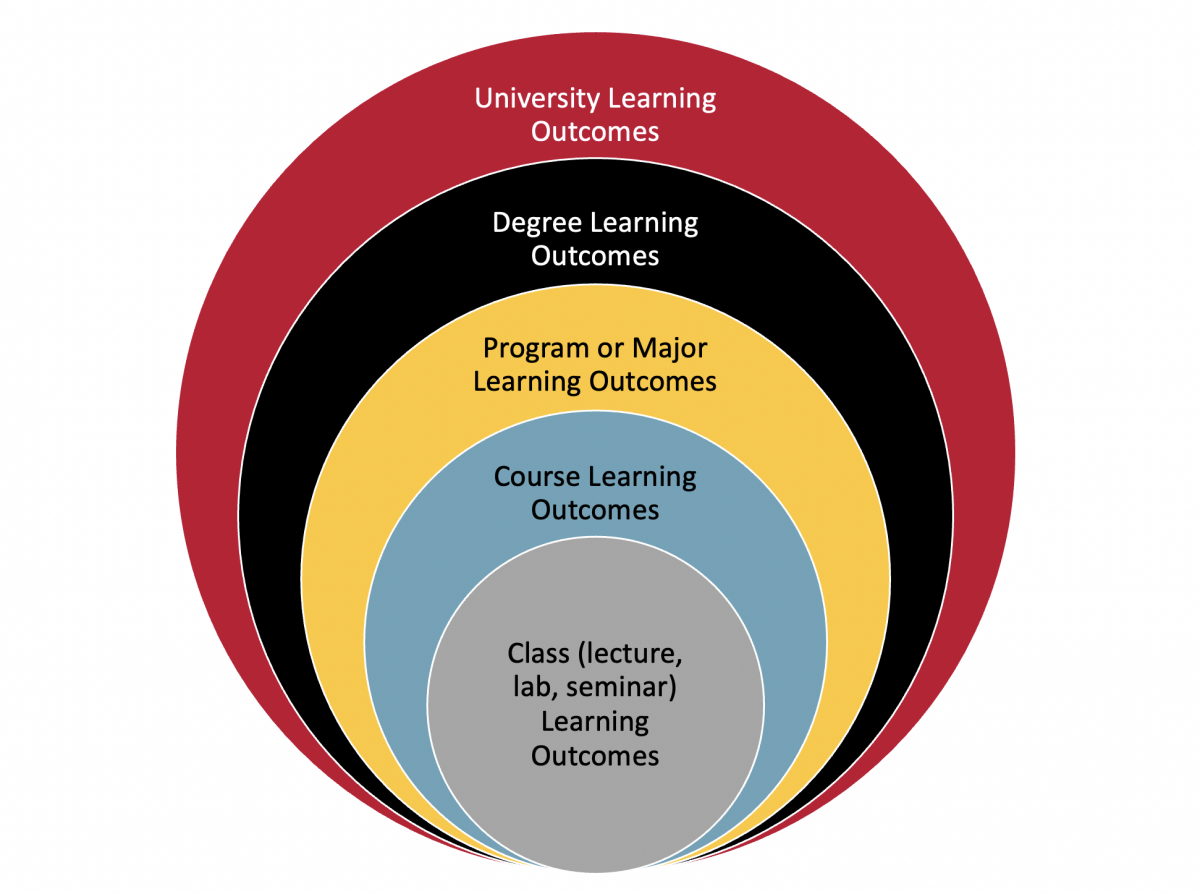Learning Outcomes
What is a Learning Outcome?
A learning outcome is a clear statement that describes the knowledge, values, and skills that a student should acquire by the end of a lesson, course, program, or degree. The University of Guelph’s five University-wide Learning Outcomes are:
- Critical and Creative Thinking
- Literacy
- Global Understanding
- Communicating
- Professional and Ethical Behaviour

Why are Learning Outcomes Important?
- Learning outcomes set a student's expectations and clearly define what a student should be able to know and do.
- They help students take responsibility for their own learning and allow them to track their progress through the course by checking learning outcomes regularly.
- Learning outcomes allow instructors to use constructive alignment to plan teaching activities and assessments that align with the course learning outcomes, resultihigh-qualityuality learning experiences.
- Learning outcomes help to standardize learning experiences between courses so that students who take the same course at different times with different instructors achieve similar knowledge and skills.
- Clear learning outcomes to increase transparency and lead to easier curricular and outcomes assessment.
Keys to Writing Effective Learning Outcomes
Learning outcomes should be:
- Easily understandable
- Avoid complex language and jargon.
- Observable and measurable
- Specify how students will demonstrate their learning.
- Cohesive with the rest of the curriculum
- Learning outcomes often follow a sequenced progression from introductory to mastery levels. Create a curriculum map to verify how your course outcomes fit with the rest of the courses in the program.
- Easily accessible to students
- Include your learning outcomes at the beginning of each class (for a lecture, tutorial, or lab), on the course outline (for a course), or your program website (for program-level or degree-level outcomes). Draw your students’ attention to the outcomes and discuss how they can use the outcomes to direct their learning.
How to Formulate Learning Outcomes:

Sample Learning Outcomes:

What is a Learning Outcome?
For guidance in writing or revising learning outcomes, use our guide below to write, revise, and refine course learning outcomes, or reach out to an Educational Developer at otl@uoguelph.ca for a consultation.
References
Upcoming Events
Contact Us
